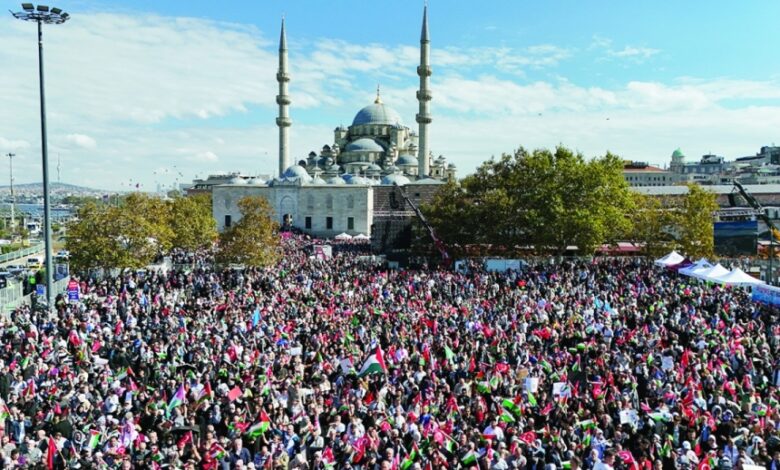
As the devastating war on Gaza enters its second year, with more than 67,000 killed and 169,000 wounded since October 7, 2023, U.S. President Donald Trump warned that Hamas would face “total annihilation” if it refused to surrender power.
Yet, he also welcomed the group’s acceptance of key provisions from his 20-point peace plan, calling it a “great deal” for Israel.
The plan includes a ceasefire, an Israeli withdrawal from the Gaza Strip, and the exchange of Israeli hostages for Palestinian prisoners.
Indirect talks between Israel and Hamas are set to begin in Cairo on Monday, attended by Trump’s son-in-law Jared Kushner and special envoy Steve Witkoff, according to news agencies.
Israeli Prime Minister Benjamin Netanyahu has pledged that no part of the plan will be implemented until all Israeli captives — alive or dead — are returned.
Meanwhile, a Hamas source told Al Arabiya/Al Hadath that the movement had begun collecting the remains of Israeli soldiers for handover, requesting a temporary halt to airstrikes in certain areas to complete the process safely.
The source confirmed that all living hostages would be released in one stage, while the transfer of bodies would occur gradually. The U.S. reportedly accepted this timeline, acknowledging the complex ground realities.
He also revealed that Hamas had received American guarantees via Qatar, ensuring that Israel would not resume the war and would commit to withdrawal from Gaza—assurances that proved decisive for Hamas’ agreement.
The group also consented to gradually surrender its weapons to a Palestinian-Egyptian authority under international oversight to maintain security during the transitional phase.
The source added that Hamas leaders’ departure from Gaza would be a voluntary choice, guaranteed safe passage by the U.S.
While Trump’s peace plan lacks a specific timetable, it calls for the Israeli army to withdraw to a line 1.5 to 3.5 kilometers inside the border, pending Hamas’ final approval.
U.S. Secretary of State Marco Rubio stated that the release of hostages would be the first step, followed by Israel’s redeployment to the “Yellow Line.”
In Jerusalem, Netanyahu reiterated that Israel will retain control of key areas within Gaza even after redeployment, rejecting any role for Hamas or the Palestinian Authority in postwar governance.
Israeli media reported that Tel Aviv plans to maintain long-term military control over three “strategic zones”:
The buffer zone along the border — The Philadelphi Corridor between Gaza and Egypt, and Hill 70 (Al-Muntar), a high-ground position overseeing much of northern Gaza.
Defense Minister Yisrael Katz confirmed that Israeli forces would “remain in controlling positions” after the war.
In a joint statement, the foreign ministers of Saudi Arabia, the UAE, Qatar, Egypt, Jordan, Indonesia, Pakistan, and Turkey expressed support for implementing Trump’s plan and for beginning immediate negotiations on enforcement mechanisms.
Meanwhile, mass demonstrations erupted across Istanbul, Rome, Barcelona, Madrid, and Amsterdam, with protesters demanding an end to the war and the release of pro-Palestinian activists detained after Israel intercepted an international aid flotilla bound for Gaza.
Follow The Times Kuwait on
X, Instagram and Facebook for the latest news updates












